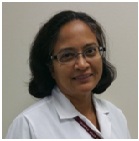Day 2 :
Keynote Forum
Daniel Bauer
The Alive Inside Foundation, USA
Keynote: A Historical journey into the global HIV/AIDS Epidemic: Remembering those who paved the way for today’s warriors
Time : 9:30 - 10:00

Biography:
Daniel Bauer is internationally revered as the Successor to the legendary escape artist Harry Houdini and globally respected as a 12-year warrior and survivor living withrnHIV/AIDS. Through heart-breaking loss, such as burying his baby brother who passed from AIDS-related complications, to conquering impossible moments of rare survival,rnhe has gracefully triumphed to once again pursing his dreams. He is one of the most requested motivational public speakers and entertainers who continues to presentrnhighly engaging educational experiences and spectacularly, life-changing theatrical productions to tens of thousands annually (adolescents, healthcare professionals andrnmainstream communities &audiences at-large) focusing on topics such as living with HIV/AIDS, prevention, reversing HIV/AIDS-related man-made stigma and so muchrnmore. He is the current active celebrity voice and face of JustGetTested.com. He continues to work tirelessly to promote equality for all living with and/or affected by thernglobal HIV/AIDS pandemic. His work as both an escape artist and speaker have been featured on national television networks [NBC, CBS, ABC and FOX], internationalrnprint/radio media (i.e. poz.com/blogs, positivelite.com, NPR Radio, Poz I Am Radio Show), international theatrical stages including New York City off-Broadway; andrnhas been highlighted at internationally revered events such as The OMICS Group 2013 International HIV/STI Conference, The National Healthy Living Summit, 2012rnInternational AIDS Conference (AIDS Reunion Program, Washington, D.C.), The 2013 University of Minnesota African Student Association Red Spots Gala, and The TexasrnState-wide HIV/HEI Conference
Abstract:
On World AIDS Day, this keynote forum will invite attendees down an emotionally empowering and engaging journey torn remember those who have dedicated their lives to fighting the global HIV/AIDS epidemic. This time is to reflect on thernhistorical milestones, to remember those who we have lost, and to celebrate those who are still standing tall to make a difference in eradicating both the virus and stigma. Attendees will walk away with a comprehensive reminder of the history of HIV/AIDS around the world
Keynote Forum
Yan Jiang
Chinese Center for Disease Control and Prevention, Beijing, China
Keynote: Taking testing as a new HIV prevention strategy towards 90-90-90
Time : 10:00-10:30

Biography:
Dr. Jiang has completed her PhD from Osaka Medical University and postdoctoral studies from Institute of Virology and Epidemiology of Chinese Army Medicine. She is the director of National HIV/HCV Reference Laboratory, China CDC. She has published more than 80 papers in reputed journals and has been serving as the UNICEF/UNAIDS/WHO expert in China
Abstract:
According to the latest guildline of WHO, 90% of all people living with HIV know their status is the critical step for controlling new HIV infections. However, it is estimated that only 54% of the 810,000 individuals living with HIV/AIDS in mainland China were aware of their status. Based on the mathematical model study, it is reported that the coverage rate and frequency of testing were negative correlated with new HIV infections. We also found that the HIV infection rate of MSM who received HIV test in the past year was significantly lower than that without testing, showing the testing is the protective factor for preventing HIV infection (to be published). Because of privacy, stigma and discrimination, the MSM population are reluctant to receive HIV test. Under the above background, we develop the Internet-based anonymous HIV urine testing, a new opotion for MSM population. The model refers to home collection of urine, transferred the sample to laboratory by mail, performed and interpreted in the professional laboratory, enquired the testing results online. The study shows the acceptability for this model is from 60.1% to 100% and the rate of awareness after testing is 92.49%, which indicating the testing model is an effective way to prompt MSM population to involve in HIV testing actively. This new model may effectively expand the coverage for testing, prevent further transmission, finally reduce new HIV infections.
Keynote Forum
Yukihito Ishizaka
National Center for Global Health and Medicine (NCGM), Japan
Keynote: DNA methylation profiling can classify HIV-associated lymphomas
Time : 10:30- 11:00

Biography:
Yukihito Ishizaka graduated Tohoku University, School of Medicine in Japan, and has obtained the Doctor of Medical Science from Jichi Medical School. He is the director of Department of Intractable Diseases and the Vice Director General of Research Institute of NCGM. His scientific interest is genomic instability during carcinogenesis, and initiated the current project just when he started HIV-1 research.
Abstract:
HIV-positive patients have 60- to 1000-fold higher risk of malignancies including non-Hodgkin lymphomas. Most HIV-associated lymphomas are high-grade B-cell lymphomas and frequently represent with poor prognostic features. To understand the nature of HIV-associated lymphomas, we performed the genome-wide analysis of methylation profiling of HIV-associated lymphomas and non-HIV lymphomas. Analysis of gene and intergenic regions by Illumina Infinium Human Methylation 450 microarray identified unique methylation profiles in HIV-associated lymphoma examined at gene promoter regions (including CpG islands Data suggest that HIV-associated lymphomas were differentially categorized from non-HIV lymphomas. We next investigated the cancer-related gene methylation profiling of HIV-associated lymphomas using Illumina Golden Gate Methylation Cancer Panel I microarray. We identified the specific DNA methylation pattern in the recurrent cases of HIV-associated lymphomas. These findings support understanding the modes of HIV-associated lymphomas and identifying new prognostic biomarkers. (Matsunaga et.al., AIDS28:503-510, 2014). Taken together with our results showing that peripheral blood cells of HIV-1 positive patients are susceptible to genomic instability (Shimura et.al., AIDS19: 1434-8, 2005), we discuss the possible mode of HIV associated lymphomas.
- Track 5: Global Epidemiology of HIV/AIDS, STDs, & STIs
Track 6: HIV research and therapy
Track 7: Social Strategies for HIV and STDs Prevention
Track 9: Lived experience of HIV
Location: Atlanta
Chair
Yukihito Ishizaka
National Center for Global Health and Medicine, Japan
Co-Chair
Debbie Y Mohammed
Saint Michaels Medical Center, USA
Session Introduction
Nilda Fernandez
CT Children's Medical Center, USA
Title: Engaging Youth in HIV/STD Prevention: Hartford Youth HIV Identification & Linkage (HYHIL) Consortia
Time : 11:15-11:35

Biography:
Nilda Fernandez is a Social Worker, Community Health Specialist and passionate advocate. Specializing in medical case management services with children, youth and women impacted by HIV/AIDS. Interested in academic work, grant writing and translation projects. Keen interest in entrepreneurial initiatives in behavioral health, consulting initiatives and public policy
Abstract:
The Hartford Youth HIV Identification and Linkage Consortia is a clinically and cost effective efficacious HIV/STD prevention approach that promotes, as well as, ameliorate underlying social risk factors that can result in poor outcomes to reaching high risk and vulnerable youth. Community engagement and pooling of resources are essential processes in the implementation of high impact prevention particularly as landscape changes in both the health care and HIV service ecosystems. Existing CDC data estimates that every year 10 million new sexually transmitted infections, including HIV, occur among youth, costing the nation almost $16 billion in health care costs every year. Early detection of HIV/STD is crucial to the overall well-being of youth in the US today. The Hartford Youth HIV Identification & Linkage Consortia (HYHIL) uses an innovative, evidence informed approach to increase early identification of HIV/STD positive youth. HYHIL works to increase prevention education and awareness, and to link youth to health care and employment services. HYHIL was formed in 1999 by UConn Health and the Connecticut Children's Medical Center. As a result of the success of collaborative efforts of many agencies and people, HYHIL has reached over 40,000 youth, in both school and community settings. Those youth have received HIV/STD education and/or screenings, and have produced a 10% positivity rate for STDs during the targeted interventions. Agencies within the community that serve at risk youth work together with community agencies that provide HIV/STD testing and linkage to care. This collaboration can effectively educate youth, while identifying those infected with HIV and providing necessary treatment and interventions. Collaboration along with the pooling of resources is a cost effective and a key component in the successful implementation of the HYHIL model. HYHIL operates as a comprehensive coalition that can effectively ensure that youth have access to and benefit from seamless care coordination. This abstract presents the HYHIL model in hopes that it can work to benefit youth in other communities to increase access to adolescent health care services, improve early identification of HIV/STD positive youth andreduce health care costs. We will explore how the collaborative operates, the structural requirements needed to sustain it andthe social impact of replicating the HYHIL model in other gravely affected areas.
Simon Kang ethe
University of Fort Hare, South Africa
Title: Exploring Myths Associated with HIV/AIDS with Examples from A Few Countries of the World
Time : 11:35-12:00

Biography:
Simon Kang ethe is currently working as a professor at University of Fort Hare, South Africa.
Abstract:
There are various myths and misconceptions surrounding HIV/AIDS within South African communitiesthat lead to the stigmatization and discrimination of people living with HIV/AIDS. The aim of this paper is toexplore and spell out the underpinnings on underpinnings on myths surrounding HIV/AIDS in South Africa. Thispaper has used a review of literature methodology. Findings indicate that South Africa embraces immense mythicalbeliefs about HIV/AIDS. Also myths flourish due to: misinformation, misinterpretation, misperceptions ofinformation associated with HIV/AIDS; are reinforced by cultures and patriarchy; and are also associated with thetraditional healers. As a way of dispelling the myths, the paper recommends clients to look or seek scientificevidence in the therapies at their disposal, adapt the use of condoms, demystify the use of the ARV treatment modalities; and enhance community education; and government to regulate the work of traditional healers.
Ezinna Ezinne Enwereji
Abia State University, Nigeria
Title: Emphasizing Reproductive Health and HIV/AIDS prevention to Youths from the Religious Perspective
Time : 12:25-12:50
Biography:
Enwereji Ezinna Ezinne is a Professor and Lecturer in Dept. of Community Medicine, College of Medicine, Abia State University, Nigeria
Abstract:
Background It is assumed that religion shapes everyday beliefs and activities of individuals including that of youths. The problem is that most times, some religious groups out of ignorance exclude their members from associating themselves with HIV prevention. The need to use religious beliefs to enhance prevention of HIV and other sexually transmitted infections among youths in the Church cannot be overemphasized. Here the roles of religious leaders in discouraging HIV-related issues like stigma, discrimination and others among members including youths will be emphasized. In this study, awareness will be created on how youths could integrate religious beliefs with HIV prevention to ensure compliance to HIV/AIDS interventions
Materials and Method An interactive seminar was held with a sample of 538 youths between 18-51 years who attended the 2010 camp meeting was studied. In effect, all the 538 youth members of Seventh-day Adventist church youth volunteer movement were studied. Researchers used combinations of methods to collect data. Story-telling and pictures of various STIs were used to explain mode of transmission and show how youths could be at risk of HIV infection. Certain strategies to enhance HIV prevention among youths like ‘say no to sex’ and others were highlighted. Thereafter, a 23 self administered questions which centered on knowledge of HIV risk factors, effective methods of preventing HIV infections and others was used for the study. Descriptive statistics including simple percentages on frequency tables were used for analysis.
Results Before the training, a good number of the respondents 404 (75%) had poor knowledge of sexually transmitted infections as a risk factor for HIV infection. HIV and other sexually transmitted infections (STIs) were seen as punishment from God on those who committed adultery and fornication. A total of 377(70%) respondents were of the opinion that people living positively with HIV/AIDS (PLWHA) and other STIs committed ominous sins and should be isolated. About 280(52%) of the participants were of the view that they would not disclose their HIV status if infected.. Although 119(22%) of the respondents believed that prayer could cure HIV, as high as 102(19%) of respondents are of the view that HIV has no cure and that youths should avoid being infected.
Conclusion The fact that youths in the church regarded fellow members who are HIV positive as adulterers and/or fornicators shows poor knowledge of mode of HIV infection. There is therefore, the need to organize regular HIV-education outreach for religious groups to reduce beliefs that discourage HIV prevention.
Ying Gu
Xiamen University, China
Title: Molecular insights into the inhibition of HIV-1 infectionusing a CD4 domain-1-specific monoclonal antibody
Time : 13:50-14:15

Biography:
Dr. YING GU, associate professor of molecular virology, is with School of Life Sciences, Xiamen University, China. She leads a group in State Key Laboratory of Molecular Vaccinology and Molecular Diagnostics, and her interests focus on the epitope identification ofHIV, Hepatitis E Virus,and HumanPapillomavirus. She contributed to the research and development of HIV diagnostics, Hepatitis E vaccine and HPV vaccine.Regarding to HIV research, she endeavors to generate monoclonal antibodies against HIV infection and investigate the assembly of HIV gag protein.She has authored or co-authored a total of 25 papers and 8 patents
Abstract:
The infection with human immunodeficiency virus type 1 (HIV-1) is associated with acquired immunodeficiency syndrome (AIDS).An HIV-1 infection in a host cell occurs through an ordered process that involves HIV-1 attachment to thehost’s cellular CD4 receptor, co-receptor binding to CCR5 or CXCR4, and the subsequent fusion with thecellular membrane. The natural viral entry pathway into a host cell provides an opportunity to developagents for the treatment of HIV-1 infections. Several engineered monoclonal antibodies specifically targetingCD4 have shown antiviral activities in clinical trials. Here, we report on an anti-CD4 mAb (15A7)that displays a unique binding specificity for domain 1 of CD4, whose epitope partially overlaps with thegp120 binding region. Moreover, 15A7 displays a much stronger binding affinity to CD4+ cell lines afterHIV infection. 15A7 is able to block and neutralize a broad range of primary HIV-1 isolates and T cell-linepassage strains. Notably, the bivalent F(ab’)2 form of 15A7 is more effective than the Fab form in blockingHIV-1 infection, which is further supported by molecular docking analyses. Together, these results suggestthat this novel antibody may exert its antiviral activity by blocking gp120 targeting to the CD4 receptoror competing with gp120 for CD4 receptor binding and might present post-attachment neutralizationactivity. This antibody could provide a new candidate to efficiently block HIV-1 infection or provide newstarting materials for HIV treatment, especially when HIV-1-resistant strains against the current CD4mAb treatments have already been identified.

Biography:
David L. Massey is highly regarded in the community as an individual giving a voice to others by sharing the stories of those who are either too embarrassed to speak due to stigma. David is sought after by major HIV/AIDS Prevention groups and organizations such as: Faith in the Bay, San Francisco, CA and the Black Women’s Health Imperative, Washington, D.C. He is able to be humorous and relatable while continuing to promote an optimistic view of what life can and should be for all people infected with and/or affected by HIV/AIDS. David has an infectious energy that has a way of grabbing the audience due to his love for people who are seemingly going against the odds. David is also a relationship correspondent for GimmyKiss.com. Los Angeles, CA.
Abstract:
This is a presentation which tells the story of an African American gay male and how he deals with living with HIV for the last 6 years of his life. The presentation highlights the challenges, struggles, and difficult conversations around stigma, as well as the journey of different business as well as personal relationships. The lines of how mental health and physical health played a vital role in his overcoming the challenges of medication adherance. The new information regarding PrEP and how its impact regarding his sexual behavior. The oral presentation will be the first hand account of working in HIV prevention, through diagnosis, to what life is like for this young man today.
Simon Kang ethe
University of Fort Hare, South Africa
Title: The Panacea and Perfidy Associated with ARVS and HIV/AIDS Disease in Selected Countries of the Developing World
Time : 14:40-15:05
Biography:
Simon Kang ethe is currently working as a professor at University of Fort Hare, South Africa.
Abstract:
The aim of this article is, through a review of literature, to discus and debate the panacea and perfidyassociated with taking ARVs (Arghandab River Valley Antiretroviral Drug) and living with HIV/AIDS with examples from South Africa and Botswana. Findings indicate that ARVs elongate lives; facilitates the fulfilment of both theMillennium Development goal number 6 of combating HIV/AIDS by 2015 and some country specific policies onHIV/AIDS. ARV’s access is also associated with; draining national coffers; deterring commitment to behaviouralchange; serving as an entry point to grants; inadequate education to People Living With HIV/AIDS (PLWHA) inSouth Africa; dependence syndrome; discrimination; side effects; increased sexual libido; campaign funders extendingimperialism; poverty ;promoting feminization of poverty and lowered accountability; and cultural disruptions.
Nirajan Bhusal
Kathmandu University School of Medical Sciences, Nepal
Title: Molecular Epidemiology of HIV-1 in Central Region of Nepal
Time : 15:20-15:45
Biography:
Dr. Nirajan Bhusal has completed MBBS in 2006 from University of Science and Technology, Bangladesh and PhD in 2014 from Mahidol University, Thailand. Since then, he has been working as a Lecturer in Kathmandu University School of Medical Sciences. He has been contributing on routine clinical service of diagnostic microbiology laboratory as an expert virologist. Beside academic activities, Dr. Bhusal has been involved in various research activities too.
Abstract:
Full length HIV-1 genome sequencing provides important data needed to address on research and development on diagnosis, treatment and prevention of HIV-1 infection. About 0.5% (64,000) of Nepal population was estimated to be HIV positive. Cross border trafficking of sex workers is a major problem contributing to increasing HIV rates in both India and Nepal. Here we examined the genetic diversity of HIV-1 isolated from central region of Nepal. 136 Blood samples werecollected from HIV-1 infected individuals attending VCT (voluntary counseling and testing) clinic between May-August 2011 at Bharatpur Hospital in Nepal. Based on complete clinical, epidemiological, and viral load data, 40 individual samples from total 136 representing all risk groups of HIV, were selected for further studied. Nucleotide sequence analysis was done following protocol of near full length genome (NFLG). There was intermixing of subtypes within transmission risk groups. However phylogenetic analysis then allowed assignment of most samples amplified belongs to HIV-1 subtype C (a distinct lineage from India). Around 10% of samples were identified as CRF01_AE and CRF08_BC. The identification of these subtypes and CRFs in the central region of Nepal is important in epidemiological tracking as well as will provide information of new antigenic regions of circulating strains, which may unfold the development of an effective vaccine in future.
Rubina Ghani
Baqai Medical University, Pakistan
Title: STD pathogens determined in semen using PCR and flow-through hybridization technology
Time : 15:45-16:10
Biography:
Rubina Ghani is Professor/ Molecular Biologist at Baqai Medical University/Pathological & Molecular Laboratories, Pakistan
Abstract:
Background: The prevalence of sexually transmitted Disease (STDs) among hotel-based sex workers (HBSWs) in Karachi, Pakistan, was studied. These hotel workers are considered as high risk group because of their age, economic independence, low education and residence in a place away from their family. Aim:The aim of this study was to access in health care facilities for diagnosis and common pathogens of STDs, those causing infertility and Chlamydia trachomatis, Neisseria gonorrhoeae and Mycoplasma hominis. Genital wart is a highly contagious sexually transmitted disease caused by some sub-types of human papillomavirus (HPV). Material and Methods:Semen samples were obtained by masturbation into sterile containers after sexual abstinence of 48 to 72 hours. Samples were subjected to semen analysis within one hour of collection and processed for freezing within two hours of collection. The concentrations of sperm as well as sperm motility were also determined. DNA extraction was extracted of all the samples and the PCR assay was performed. The amplicons are subsequently hybridized to pathogen-specific capturing probes via “Flow-through” hybridization. Result:.During our study we came across with the STI pathogens present in our population and the reason for infertility was the main cause. When Chlamydia trachomatis and Neisseria gonorrhoeaewere detected in their wife’s were also screened and these STI pathogens were identified. Conclusions The main route for the transfer of STI pathogens were the men special those who visited commercial sex workers or hotel-based sex workers as they were working in other cities and the complained for infertility.Screening for bacterial STI pathogens, Mycoplasma hominis, Chlamydia trachomatis and Neisseria gonorrhoeaeare strongly recommended because these pathogens can cause serious reproductive complications such as pelvic inflammatory disease, ectopic pregnancy
- Poster Sessions
Location: Foyer
Session Introduction
Ewa Carlsson-Lalloo
University of Gothenburg, Sweden
Title: Sexuality and reproduction in HIV-positive women: a meta-synthesis of how HIV-positive women´s experiences of sexuality and reproduction have been described in qualitative studies
Time : 16:10-17:00

Biography:
Ewa Carlsson-Lalloo is working as a clinical nurse, specialized in HIV care at the Clinic of Infectious Diseases, Södra Älvsborgs Hospital, Borås, Sweden. Ewa is also PhD student at the Institute of Health and Care Sciences, Sahlgrenska Academy, University of Gothenburg, Sweden. This study is part of a doctoral thesis about HIV-positive women´s sexual and reproductive health
Abstract:
The effectiveness of antiretroviral treatment (ART) has made HIV comparable to a chronic illness regarding life expectancy in well-treated persons. Central to health and wellbeing are needs related to sexuality and reproduction and women are particularly vulnerable to HIV due to both biological factors and gender-based inequalities. HIV-positive women present unique challenges regarding sexuality and reproduction as intimate relations and pregnancy. The purpose of the study was to synthesize how HIV-positive women´s experiences of sexuality and reproduction have been described in qualitative studies. A meta-synthesis was carried out with 18 peer-reviewed qualitative studies, originating from countries outside Asian and African continents. The analysis shows that HIV-infection made sexuality and reproduction choices problematic; HIV is a burden. The burden is not constant, it is a balancing act. Conditions described in three themes makes the weight of the HIV burden heavier; HIV as a barrier, feeling of fear and feelings of loss. Conditions described in three themes makes the HIV burden weight easier; motherhood, spiritual beliefs and supportive relations. The study broadens the understanding of HIV-positive women´s situation and identifis important conditions that need to be addressed in developing optimal health care and to better meet the women´s needs when it comes to sexuality and reproduction. There is need for individualized support including information about ART, HIV transmission and sexual techniques. In future research there is need to focus on how health care professionals should perform adequate support to HIV-positive women in relation to sexuality and reproduction.
Debbie Mohammed
Saint Michael’s Medical Center, USA
Title: Residents Living with HIV/AIDSRetained in Medical Care or Virally Suppressed, New Jersey, 2009
Time : 16:10-17:00

Biography:
Debbie Y Mohammed is an adult nurse practitioner with 15 years experience specializing in the care of HIV infected persons. She completed her doctorate in Public Health with a concentration in Epidiemiology, graduating from Rutgers State University in 2015
Abstract:
Background: HIV-infected residents who remain engaged in medical care, receive medications and have a suppressed viral load (VL) should experience decreases in HIV-related morbidity, mortality and potential transmission of infection. This study provides baseline percentages to evaluate progress towards the 2020 indicators of the United States National HIV/AIDS Strategy to retain residents in medical care and suppress HIVVL (90% and 80% respectively). Methods: Data were obtained from the New Jersey electronic HIV/AIDS Reporting System and included residents diagnosed > 13 years, alive as of 12/31/2008, with a report of at least one CD4+ count or HIV VL from 2003-2008. Retention in medical care was defined by the presence of at least one CD4+ count or HIVVL in 2009, and a suppressed HIVVL was < 200 copies/ul. Patient characteristics were compared using chi-square tests of association. Results: A total of 22,754 residents were included in this study. Overall, 15,138 (66.5%) were retained in medical care in 2009, 11,500 (50.5%) had at least 1 VL available in 2009, and 5,151 (22.6%) had a suppressed HIVVL. Those less likely to be retained in medical care or be virally suppressed included younger residents (aged 13-24, 25-34, and 35-44), those with a non-AIDS diagnosis and diagnosed 0-5 years ago. Males were less likely to be retained in care but females were less likely to be suppressed. Higher percentages of residents less likely to be suppressed included blacks, Hispanics, injection drug users, heterosexuals and those receiving public funding. There was no difference in retention among residents in an area of high prevalence vs. a lower prevalence area but a lower percentage were virally suppressed in high prevalence areas. Conclusions: Baseline estimates of residents retained in medical care and having a suppressed viral load demonstrate challenges and opportunities in this area. Interventions targeting specific risk groups are needed and can include intensive case management with enhanced personal contact, evidence-based adherence and prevention interventions. The results of this study may not be applicable to other jurisdictions and social determinants of health were not evaluated.
Atemnkeng Francis Njukeng
Bafoussam Regional Hospital, Cameroon
Title: Cause of poor retention in care in adult HIV patients on treatment at the Bafoussam Regional Hospital, Cameroon
Time : 16:10-17:00

Biography:
Atemnkeng Francis Njukeng completed his Medical studies at the age of 26 years from Faculty of Medicine and Biomedical Sciences, University of Yaounde 1 in 2012, and an Inter-University Diploma in the Comprehensive Care of People Living With HIV/AIDS from the University of Ouagadougou, Burkina Faso and Université de Pierre et Marie Curie, Paris, France in 2014. He is the Assistant Coordinator of the Reference Treatment Centre of the Bafoussam Regional Hospital. He has published 1 paper in BMC Pregnancy & Childbirth, and had a poster presentation at the IAS 2015 that held in Vancouver, Canada
Abstract:
Achieving 95% of adherence is a major problem faced among HIV/AIDS patients at the Bafoussam Regional Hospital. With an active file of about 4500 patients on treatment at the centre, an average of about 300 patients per month do not report to the pharmacy for refill of drugs. A descriptive study was carried out at the Approved Treatment Centre of the Bafoussam Regional Hospital to identify the reasons why adult patients on ART did not report to the centre for refill. The study included 304 patients who were lost to follow-up in the month of January 2015. Firstly, phone calls were made to contact these subjects, then an interview with those who finally returned to the centre. The median age group was 35-45years, 59.5% were females. After the phone calls were made, 56% of phone numbers were not going through; 18% (54) promised to come back; the rest were reported either dead or did not pick up their phone. Of the 54 subjects who promised to return, 52 were received and interviewed; 46% (24) were resident out of town (Bafoussam) and could not travel; 17 said they were tired of taking ART, 8 declared to have been admitted in another hospital, 7 were receiving traditional medicines, 7 could not afford the transport fare to the treatment centre, 3 were derailed by pastors who declared them healed; 10 other patients declared to still have medicines. Therefore, HIV patients in Bafoussam are encouraged to receive ART in their hometown.
Nkwachukwu Gabriel Agwu
Ladoke Akintola University of Technology Ogbomoso of Applied Sciences, Nigeria
Title: Effect of mobile HIV & STI counseling and testing, among sexually active young people: A case study of Gashaka Rural Community, of Taraba State, North and Apo Mechanic village in Abuja municipal area council of FCT, Abuja, Nigeria
Time : 16:10-17:00
Biography:
Nkwachukwu Gabriel Agwu Chuks currently works at Ladoke Akintola University of Technology Ogbomoso. He received an MSc in Social Work and Health Care Option from Institute of Development Administrative of Nigeria, University of Ibadan, Nigeria, and a PGD in Monitoring & Evaluation from University of Ibadan. He obtained a HND in Microbiology/Virology Techniques, from University of Ibadan, OND Laboratory Technology. He is an Associate Member of Nigerian Institute of Science Laboratory Technology (AMNISLT).
Abstract:
Introduction/Background: Mobile outreach HIV counseling and testing HCT is defined as one of the most effective social strategic ways of prevention of HIV and STD in the World. More than 60% of young active youths from Nigeria aged 16-49 are in danger and needed to be reached through this mode of prevention. Methods: As a consultant’s team contracted by Management Sciences for Health (MSH) and International Labour Organisation (ILO), we conducted series of mobile HCT outreaches in some communities in northern part of Nigeria and Abuja FCT. The research shows that over 3000 persons including sexually active young youths were sampled in FCT Abuja, Nigeria. A group of professional consultants e.g., laboratory scientists, researchers, HCT counselors/testers, volunteers and community assistants were recruited for two weeks in Gashaka, Taraba State North and Apo Mechanic Village in Abuja Municipal Area Council of FCT in sampled sites. Results: Quantitative results have shown the way mobile HCT outreach was done in combination with other tests to attract people for the HCT. The use of churches, mosque, auto-mechanic villages, DJ music, town criers and Eagle squares are more significant as a social strategic way of prevention of HIV and STIs. (4.3%) 54 young active youths reached us showing the highest out of the total of (5.5%), 1260 persons were tested and 70 persons were positive. This was done in 2012 and out of 1146 number of persons tested, 1131 are young active youths and all the 15 positive cases they are within the age of 15-49 in 2015. This calls for more awareness creation of HIV and STI prevention. Conclusions: The theoretical analysis, backed by observation of mobile HCT outreach plays an important role in the prevention of HIV and STIs scourge in Nigeria. More planning should be made to reach the unreached through the use of mobile van and mobile boats for river rain areas. Outreaches in churches and mosque should be encouraged as most of the young people can be reached.
Ezeama Martina
Imo State University, Nigeria
Title: School-based HIV/AIDS risk-reduction intervention programmes among adolescents in Orlu senatorial zone, Imo state, Nigeria
Time : 16:10-17:00
Biography:
Ezeama Martina is currently working at the Imo State University, Nigeria. Her research interest is HIV/AIDS, Public health etc.
Abstract:
Introduction: Human immuno-deficiency virus (HIV) and acquired immune deficiency syndrome (AIDS) constitute a major public health challenge in Imo State of Nigeria and adolescents are increasingly becoming vulnerable. It is necessary to target adolescents with risk-reduction educational interventions because thy can be effectively reached through schools. However, effective interventions for doing this are limited in Nigeria. This study was, therefore, conducted to investigate the relative effectiveness of class-room instruction (CI) and drama (DR) on HIV/AIDS knowledge and risk-reduction practices among adolescents in Orlu Senatorial Zone. Materials & Method: A quasi-experimental design was adopted which involved 165 students from three randomly selected co-educational secondary schools assigned to two experimental groups (CI and DR) and control. Baseline data were collected using a semi-structured questionnaire which included 29-point knowledge and 27-point risk reduction practices scales. Knowledge scores <15 and ≥15 were classified as poor and good respectively while risk reduction practices scores <13 and ≥13 were categorised as positive and negative respectively. Results were used to design interventions that were implemented for 8 weeks. Mid-term and follow-up evaluations were conducted using the same instrument. Data were analysed using descriptive statistics, t-test and ANOVA at p=0.05. Result: Ages of the respondents in CI, DR and control groups were 13.4±1.2, 13.9±1.5 and 13.8±1.2 years respectively. Knowledge scores on HIV/AIDS at baseline were 20.5±2.7, 20.4±2.6 and 21.1±2.7 for CI, DR and control groups respectively. These increased significantly to 22.7±2.7, 22.6±1.8 and 21.2±0.3 at mid-term among CI, DR and control, respectively. At follow-up, scores among CI and DR increased significantly to 23.9±1.8 and 24.5±1.4 respectively while the control’s score dropped to 20.0±2.8. HIV risk reduction practice among the respondents in CI, DR and control at baseline were 18.5±4.6, 19.8±5.8 and 17.0±4.8, at mid-term scores were 23.8±3.4, 23.6±3.4 and 17.7±5.1, while scores at follow-up were 24.9±2.6, 26.7±1.1 and 17.0±5.3 respectively, indicating significant increase among the intervention arms than control. Conclusion: Drama intervention yielded more positive outcomes in knowledge gained and risk-reduction practices than classroom instruction. Drama is therefore recommended for use as school-based HIV/AIDS risk-reduction intervention in Orlu Senatorial Zone, Imo State, Nigeria.
Amanda M. Gabster
Gorgas Memorial Institute for Health Studies, Panama
Title: HIV and STI prevalence and patterns of not having a recent HIV test in individuals with suspected STIs in Panama
Time : 16:10-17:00

Biography:
Amanda M. Gabster completed her MSc in Public Health in 2013 from the London School of Hygiene and Tropical Medicine and her BSc in 2008 from the University of Alberta, Canada. Since 2013, she has worked at the Gorgas Memorial Institute as a coordinator for a project in HIV Epidemiology in Adolescents.
Abstract:
Background: The 2013 HIV prevalence in the Panamanian adult general population was 0.7%. Studies have shown that the presence of other STIs increases both the susceptibility to and transmission of HIV. In the present study, individuals with signs or symptoms of STIs and those who believe they could be infected due to high-risk sexual behavior were included to measure STI and HIV prevalence, socio-demographic factors; additional analyses examined factors associated with not having had a recent (in 2012/2013) HIV test. Methods: Bio-behavioral data was collected in public health and clinical non-profit centers between March-July,2013 in the urban districts of Colón and San Miguelito, Panama. Univariate, bivariate and logistical analyses were preformed. Significance was set at p<0.05. Results: From 251 male and female participants; 4.31% were positive for HIV, 3.86% for syphilis, 2.98% for HBsAg and 8.90% for anti-HBc, 0.00% for HCV and 54.24% for HSV-2 (IgG). Recent HIV testing was significantly less likely in females compared to males and in San Miguelito compared to Colón. Despite Colón´s “MSM Friendly clinic”, MSM in this district were not significantly more likely to have had a recent HIV test than MSM in San Miguelito. Conclusions: STI prevalence was found to be high in the participants from both districts. HIV prevalence was found to be 6.16 times higher than in the general population. Recent HIV testing in individuals with suspected STI´s was low in males, and even lower in females. Scale-up of HIV/STI screening is needed for both sexes.
Tshilidzi Mashamba
University of Venda, South Africa
Title: The use of gain versus loss framed messages in encouraging university students to test for HIV
Time : 12:00-12:25

Biography:
Tshilidzi Mashamba is associate professor at University of Venda.
Abstract:
Introduction:Framed messages have been used as one of the intervention strategies in encouraging people to take disease detection tests. Although there is no cure for HIV and AIDS, testing and early diagnosis have tremendous benefits. According to the Prospect Theory, decision-making is influenced by the way information is framed or delivered. Aim:The aim of this study is to assess the impact of gain and loss framed messages on encouraging HIV testing among university students. Method: Participants: University students will be recruited to participate in the study. Ethical issues: Participants will be informed regarding the purpose of the studyand that participation was voluntary. After agreeing to participate they will be requested to sign the consent forms. Materials:Two versions of information paragraphs about potential risks or benefits associated with taking or not taking HIV test orwill be used, one containing a gain-framed message, and the other one a loss-framed message.A semi-structured interview guide which contains three sections will be used: The first section will be used to collect their sociodemographics, and the second section will contain questions on their sexual practices, previous STI diagnoses, and type of contraceptives they use, and the final section will contain questions gain framed messages followed by loss framed messages. Posters containing both loss and gain framed messages will be used in the facilitation of the interviews
Celine Pascheles
Stonybrook University School of Medicine, USA
Title: AIDS Presenting as Shigella colitis and Pneumocystis jiroveci pneumonia in a Forty Three Year Old Male
Time : 16:10-17:00

Biography:
Celine Pascheles has completed her BA at the age of 21 years from Columbia University. She majored in Neuroscience and Behavior and graduated with Latin Honors, Cum Laude. She is now a Fourth Year Medical Student at Stonybrook University School of Medicine and is pursuing a carreer in Emergency Medicine.
Abstract:
Background: About 450,000 people per year are infected with Shigella species in the United States, culminating in about 6,200 hospitalizations and 70 deaths per year. While most reported cases have previously been described in children under the age of 10, Shigellosis has now been recognized as a sexually transmitted disease among men who have sex with men, with direct oral-anal contact posing as major risk factor. Methods: In this abstract we describe a rare case presentation of sepsis due to Shigella colitis in a previously healthy individual that led to a new diagnosis of HIV/AIDS. What makes this case unique is that the patient's hospital course was soon complicated by hypoxic respiratory failure and recurrent sepsis associated with bilateral Pneumocystis jiroveci pneumonia confirmed with bronchoalveolar lavage. Results: With appropriate antibiotic therapy and supportive measures the patient made a remarkable recovery leading to discharge at a rehabilitation facility. In addition, the patient was followed at an HIV clinic and within six weeks of antiretroviral treatment, his viral load decreased by three logs and he had an appropriate immunologic response. Conclusion: Shigellosis is a sexually transmitted disease that is prevalent in men who have sex with men, requiring a high index of suspicion in those who engage in oral-anal contact. To the best of our knowledge, this is the first case describing a previously healthy patient presenting with both Shigella and Pneumocystis jiroveci pneumonia, leading to a diagnosis of AIDS.
